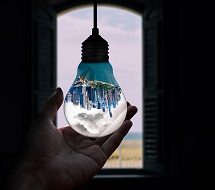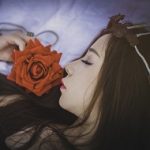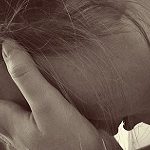Benefits of Light Therapy for Depression

Light, especially the natural outdoor light, is critical to how humans’ function. It is an important regulator of both the physical body as well as the mind; without which, general health, and especially that of the mind is affected.
Most often, people who experience the worst side effects of minimal light happen to suffer from some kind of depressive moods and sleep disturbance.
Theirs is a depressive disorder which is normally treated using a unique type of treatment known as light therapy.
What Is Light Therapy?
It is a type of treatment which involves affected individuals being exposed to certain controlled and strong light. The light, which is administered through a special device known as the lightbox is designed to mimic daylight.
Patients are made to sit, work or even sleep near this box. However, they are advised not to stare right into the light. The artificial light is said to work by activating the brain cells, which in effect, produce the required amounts of serotonin and melatonin; these hormones, when in balance combat any symptoms of depression.
Which Depressive Disorders Can Use Light Therapy?
Different types of depression are usually diagnosed by different symptoms exhibited by the sufferers. The most common ones are the psychotic and major depressive disorder. But the types that can be effectively treated by light therapy include:
- Bipolar disorder
- Seasonal affective disorder (SAD)
What Is Seasonal Affective Disorder?
During different seasons of the year, such as fall and winter, there is usually very little light coming in. As such, many people who are used to natural light can face extreme challenges when it comes to a minimal discharge of light.
They can suffer from a depressive condition known as Seasonal Affective Disorder (SAD). Some of the symptoms of this condition include sleep disturbances and a significantly depressed mood. The typical signs of depression which become quite apparent when SAD strikes, include feeling stressed, irritated, and suicidal most of the time.
According to research, there is usually a great decrease in the production of serotonin and melatonin, which are the natural mood hormones, and sleep boosters in that respective order.
How Does Light Therapy Treat SAD?
It is a safe and effective method of treatment that easily alleviates symptoms of SAD, allowing individuals to live more normal and healthy lives.
Light Therapy Box functions in such a way that it emits, and imitates the natural outdoor light. The brain cells respond to this light by increasing more production of serotonin, a mood booster, and melatonin which is good for inducing sleep.
Light Therapy Box can be placed by the bed so that the moment you wake up, you meet something exactly light the normal daylight.
What Is Bipolar Disorder?
This condition usually depicts two extreme mood shifts in an individual. It moves from a manic extreme to a depressive extreme. When a person is in their manic phase, they show both severe levels of agitation, irritability, and impulsiveness.
It is a state of the mind that is accompanied by a certain level of impaired judgment, and sometimes, patients are capable of making poor decisions. On the other hand, the depressive phase is accompanied by a sense of hopelessness, loss, and negative thoughts.
Most people with this condition also experience sleep difficulties. For instance, in their manic state, patients do not sleep at all; but while in the depressive state, they would want to sleep all the time; it is due to an imbalance in melatonin.
Lightbox therapy has proved to be quite effective in treating this type of disorder. Because the light that is emitted mimics natural light, any kind of sleep disturbances are averted. The reason is that intense light which is akin to that of the midday sun increases production of the amounts of melatonin, which is responsible for sleep.
What Are the Side Effects of Light Therapy?
Some of the common side effects that have been reported include:
- Headaches
- An intense visual glare
- Eye strain
Precautions should, therefore, be taken while using the device. Individuals, who have one eye condition or another, such as glaucoma, or cataracts, are usually advised not to use this kind of therapy. It’s because the light is usually quite intense and blinding.
Conclusion
It is true that light therapy has been in use for a while now. Its success in treating certain types of depressive disorders has had the medical world thinking out of the box. For instance, studies and research are underway to see how it can be effectively used for a variety of mental disorders.
The idea behind this is that since the therapy is successfully being used for such conditions as SAD and Bipolar, then it can equally be effective for any another type of mental condition; all it requires is medical proof.





